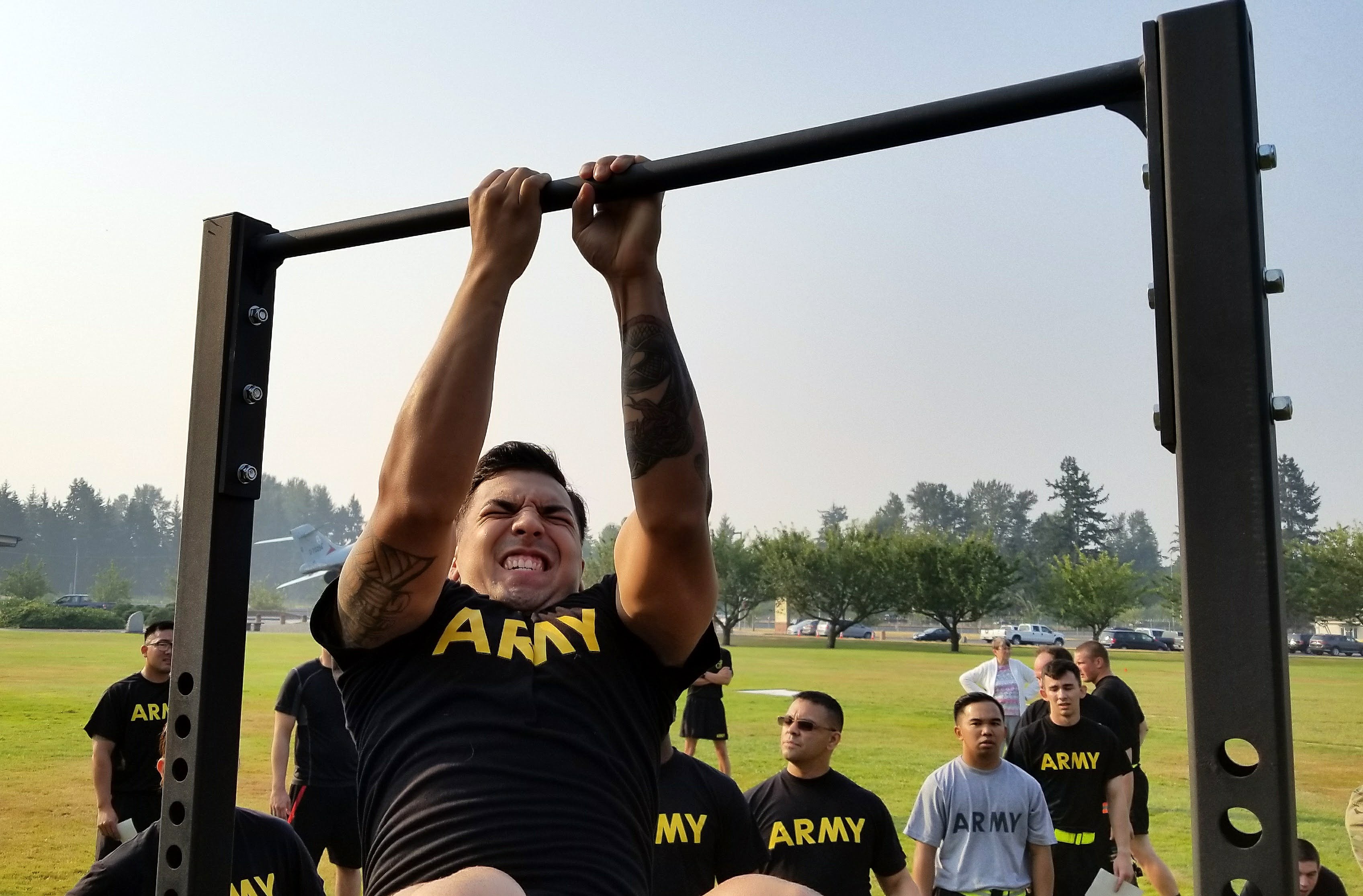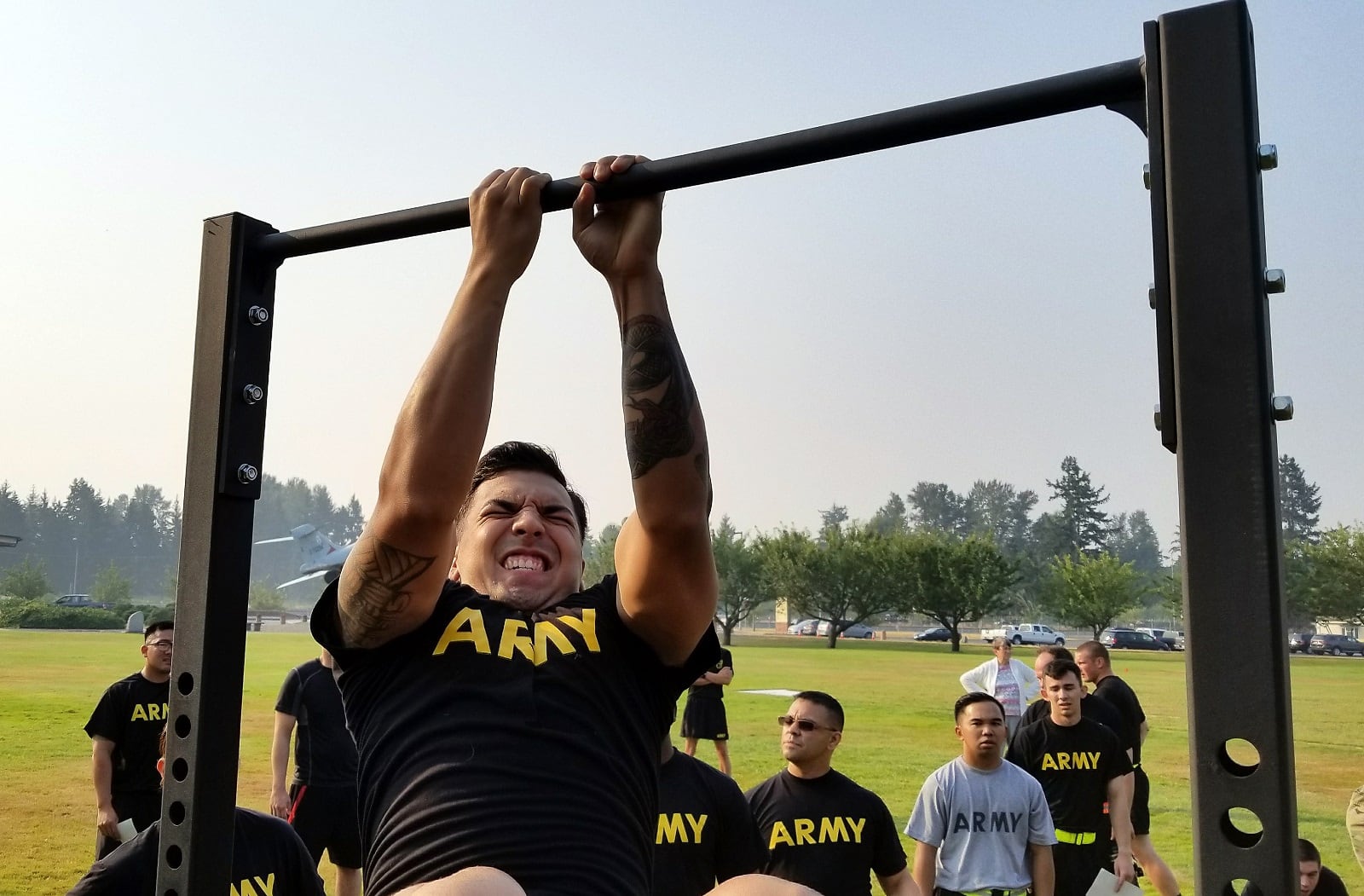Army fitness is at a turning point.
After decades on the push-up, sit-up and run model, the service is piloting a combat fitness test to measure whether soldiers are up to the physical challenge of battlefield tasks.
But the physical aspect is just the first step in a reworking of the way the Army looks at overall health, the commander of the Center for Initial Military Training told Army Times in a Sept. 28 interview.
“If you think about fitness for the Army, and this is holistic, meaning it is physical, it is mental, it is spiritual, it is nutrition-based, it is performance-based,” said Maj. Gen. Malcolm Frost.
The Army Combat Readiness Test, which has completed two pilots already and is gearing up for a third, is a six-event test that measures all five domains of fitness: Speed/agility, muscular endurance, cardiovascular endurance, explosive power and strength.
RELATED

That’s an improvement on the existing Army Physical Fitness Test, which only measures the two types of endurance, Frost said. Changing the way the Army thinks about what it takes to be ready to win in combat represents a “generational shift,” he added.
“What do we need in order to raise the fitness — holistic fitness — and especially physical fitness level of that force, to make them into ... soldiers that can dominate on the battlefield against any adversary?” he said. “In order to do that, we need world-class fitness facilities. We need high-end equipment. We need to be staffed with performance training and therapy and wellness professionals. And you might ask why? Well, it is all about readiness.”
That starts with physical training, he said, but, in particular, training that uses the right mix of muscle groups, while including the right recovery regimen to reduce injuries.
“In musculoskeletal injuries we had, you know, 10 million limited duty days last year — half a million soldiers per year,” he said.
That added up to almost $1 billion spent on treating those injuries, he said, on top of the billions the Army spends on training soldiers who ultimately aren’t combat-ready.
“So if you just look at that, and you start to put those in fiscal terms: Non-deployables is $3 billion. First term attrition, that is $2.5 billion. Body mass index, that is $1.2 billion. Musculoskeletal, that is nearly a billion dollars. And you add that up,“ he said. “If you just saved, let us say a 1 percent reduction, you are talking about, in fiscal terms, cost avoidance of $60 to $76 million. Much less what you get in the readiness aspect, if you can just correct some of that.”
The cost savings probably won’t add up to the expense of reworking the Army’s entire fitness enterprise, to something that more resembles the physical, nutrition and mental support available to special operations forces.
“Well, so I guess number one thing is, I do not think you can put a cost on readiness. I think that is one of the tangible or fringe benefits that you get from it. That is not the primary reason you do it,” he said. “I think you have to look at this and say, you know, what do we need to do to invest in an Army that is ready, where ... we have less injuries, where we have soldiers that are in shape, and we have soldiers that are deployable. That is primary to what we do.”
Meghann Myers is the Pentagon bureau chief at Military Times. She covers operations, policy, personnel, leadership and other issues affecting service members.
